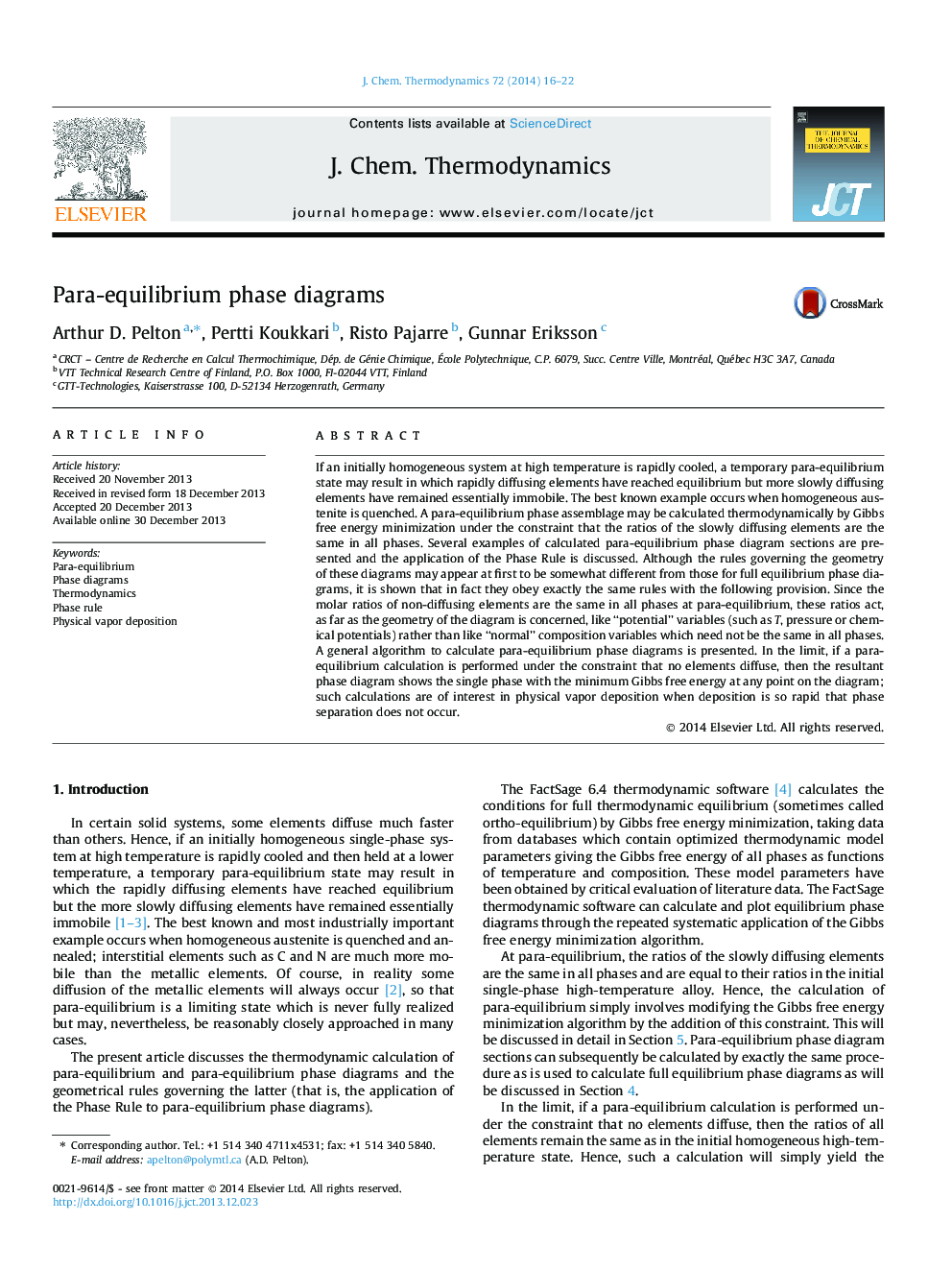| Article ID | Journal | Published Year | Pages | File Type |
|---|---|---|---|---|
| 215393 | The Journal of Chemical Thermodynamics | 2014 | 7 Pages |
•A rapidly cooled system may attain a state of para-equilibrium.•In this state rapidly diffusing elements reach equilibrium but others are immobile.•Application of the Phase Rule to para-equilibrium phase diagrams is discussed.•A general algorithm to calculate para-equilibrium phase diagrams is described.
If an initially homogeneous system at high temperature is rapidly cooled, a temporary para-equilibrium state may result in which rapidly diffusing elements have reached equilibrium but more slowly diffusing elements have remained essentially immobile. The best known example occurs when homogeneous austenite is quenched. A para-equilibrium phase assemblage may be calculated thermodynamically by Gibbs free energy minimization under the constraint that the ratios of the slowly diffusing elements are the same in all phases. Several examples of calculated para-equilibrium phase diagram sections are presented and the application of the Phase Rule is discussed. Although the rules governing the geometry of these diagrams may appear at first to be somewhat different from those for full equilibrium phase diagrams, it is shown that in fact they obey exactly the same rules with the following provision. Since the molar ratios of non-diffusing elements are the same in all phases at para-equilibrium, these ratios act, as far as the geometry of the diagram is concerned, like “potential” variables (such as T, pressure or chemical potentials) rather than like “normal” composition variables which need not be the same in all phases. A general algorithm to calculate para-equilibrium phase diagrams is presented. In the limit, if a para-equilibrium calculation is performed under the constraint that no elements diffuse, then the resultant phase diagram shows the single phase with the minimum Gibbs free energy at any point on the diagram; such calculations are of interest in physical vapor deposition when deposition is so rapid that phase separation does not occur.
